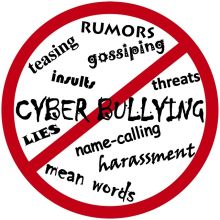Safer Internet Day 2014 is the perfect time to plan your approach to making the internet a safer place for your pupils. Adults and young people alike are exposed to countless threats on a daily basis whilst surfing the net. By identifying these threats and devising methods to combat them, we can start making the internet safer for young people.
Safer Internet Day is a great initiative for raising the awareness necessary to protect young people from the dangers encountered online. The day serves to “promote safer and more responsible use of online technology and mobile phones, especially amongst children and young people across the world.” (Insafe, 2014).
So what can be done in the classroom to develop the awareness and knowledge to make the internet safer?
1. Statistics
In October 2013, Ofcom issued a report on media use and attitudes amongst children and parents. The report identified the following statistics:
There have been some decreases in children’s online safety skills. On average, 12-15s have never met, in person, three in ten (on average, 78) of the friends listed on their main social networking site profile. A substantial minority of 12-15s have a social networking profile which may be visible to people not known to them, and this has increased since 2012 (33% vs. 22%). Children with a social networking site profile that may be visible to people not known to them are more likely to have undertaken some kind of potentially risky online behaviour, such as adding people to their contacts they don’t know in person, or sending photos or personal details to people only known online. Compared to 2012, children are less likely to know how to block messages from someone they don’t want to hear from (53% vs. 68%) and to have done this in the past year (32% vs. 42%). However, more positively, compared to 2012, only a very small number of 8-15s now say they would not tell someone if they found something online that was worrying, nasty or offensive (1% vs. 3% for 8-11s, and 4% vs. 8% for 12-15s)
These statistics can give us the first step to overcoming the problem. Identifying attitudes and usage is crucial to establish where pupils’ internet safety knowledge is lacking. Try handing out a questionnaire to identify your pupils’ current usage and attitudes towards internet safety.
2. Prevention
The most important foundation for protecting young people online is to arm them with knowledge. Adopting preventative methods to limit risks is essential. Ensure pupils know how to change their privacy settings on social media websites so that only friends and family can view their profile. Make pupils aware of the dangers that can come from sharing personal information such as:
- Photographs
- Telephone numbers
- Addresses
- Current location
Many social media sites encourage you to share this type of information, so highlighting the dangers of this is vital.
Also, as the previously quoted Ofcom report identified, many children with a social media account are unaware of how to block people from viewing their profile, so sessions on this would be beneficial.
3. Reporting
One of the most important factors is for pupil to know what to do when they feel uncomfortable with anything they encounter online. One of the biggest problems we currently face is the fact that new threats are developing faster than we are able to deal with them. The Guardian reported last November that:
“For all its positives, the online world is full of potential hazards to young people. Sexting, bullying and sexual approaches from strangers are online dangers modern teenagers routinely face. And adults’ knowledge of what young people are doing online is often vague and complacent.”
Most websites have the facility to report abusive or offensive messages, so encouraging this is a must.
4. Respect
Another important issue is teaching young people that they must show respect for others online. The anonymity the internet can give allows people to be abusive and disrespectful without fear of any ramifications. On social media websites and forums, it is not uncommon for people to be targeted because they have expressed a view that others disagree with. Discuss the difference between putting your opinion across and being abusive because somebody doesn’t have the same view as you. Flaming and trolling are rife on these websites, where people are encouraged to join in with the abuse of others.
5. Communication
Ensure parents are clued up when it comes to internet safety. A report on the BBC website today stated that “Almost one in five children said they had seen something on their devices that had upset them, twice the number parents had thought.” It went on to discuss the statistics of parental control usage on internet devices:
“Over 50% of parents who took part in the BBC poll said they had set up parental controls and filters on their tablets but only 40% said they had done the same on their children’s smartphones.”
It would seem that adults’ overall understanding of the risks posed to young people is somewhat hazy, therefore the more communication between school staff and parents or guardians the better. Some children and teenagers may feel embarrassed or uncomfortable discussing abuse that they have encountered online, but by openly discussing the dangers, hopefully pupils will feel more comfortable telling an adult if it something they have experienced.
So let’s use today to start making the internet a safer place for our students.
Featured image courtesy of Rock1997.










